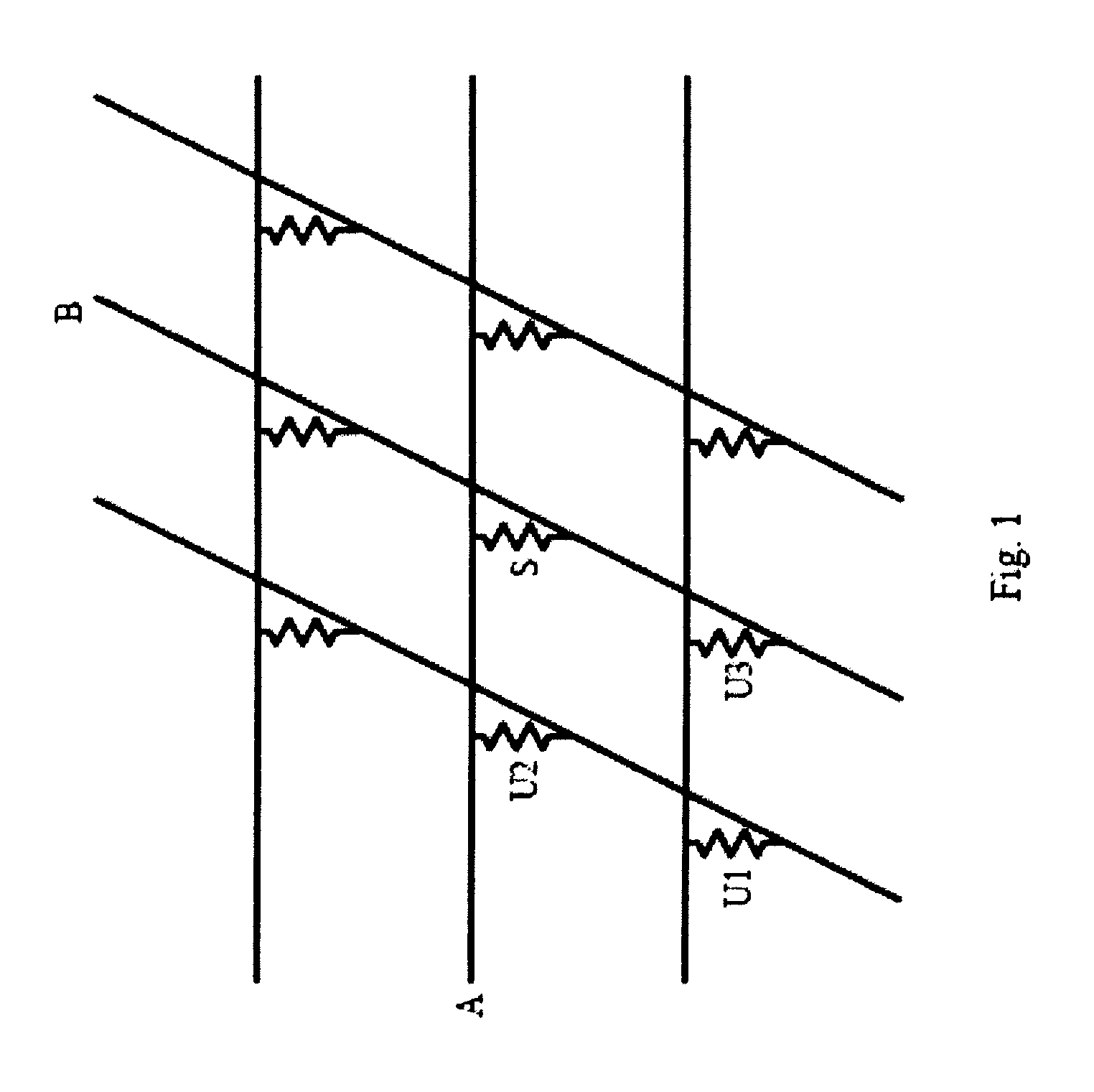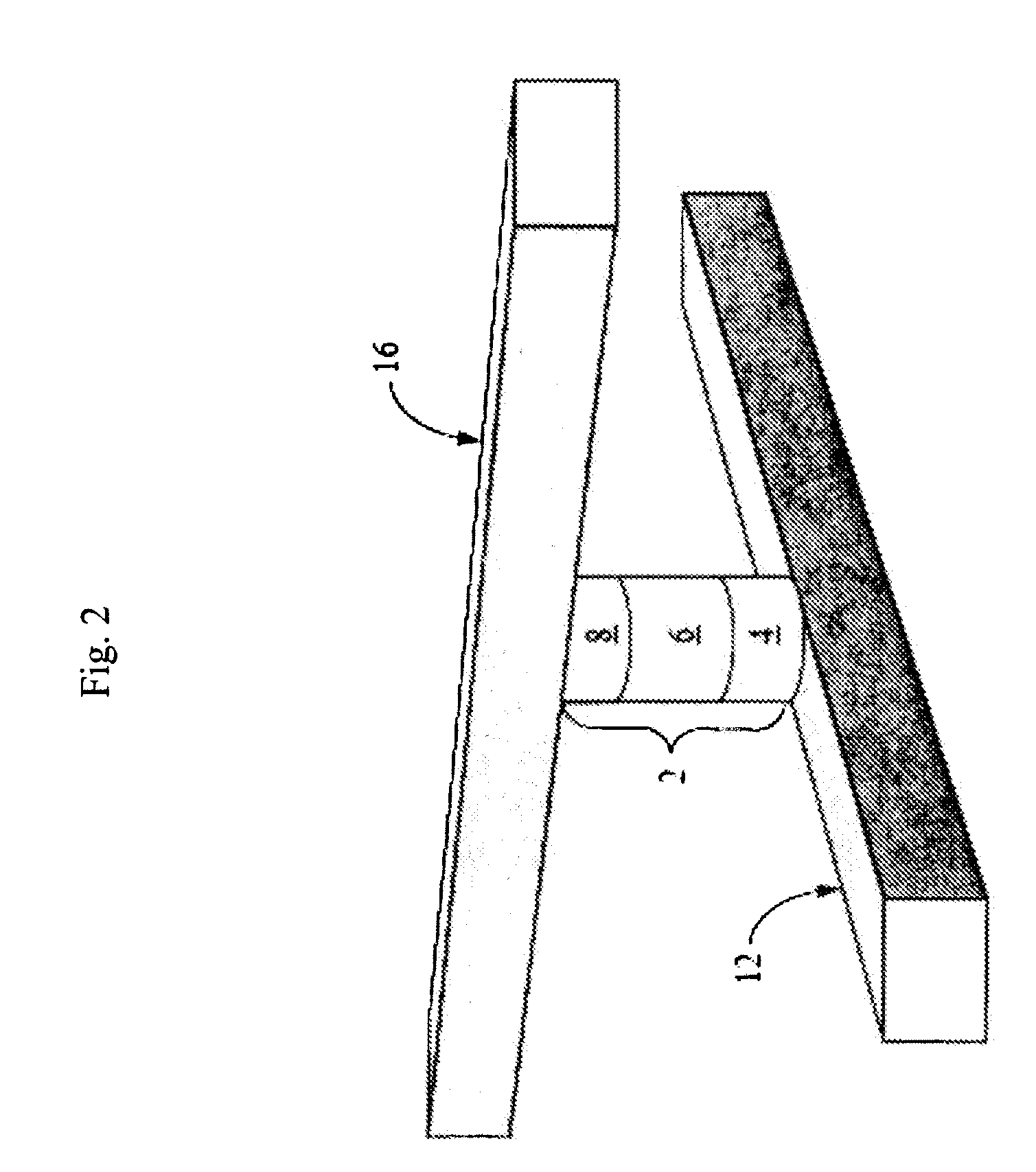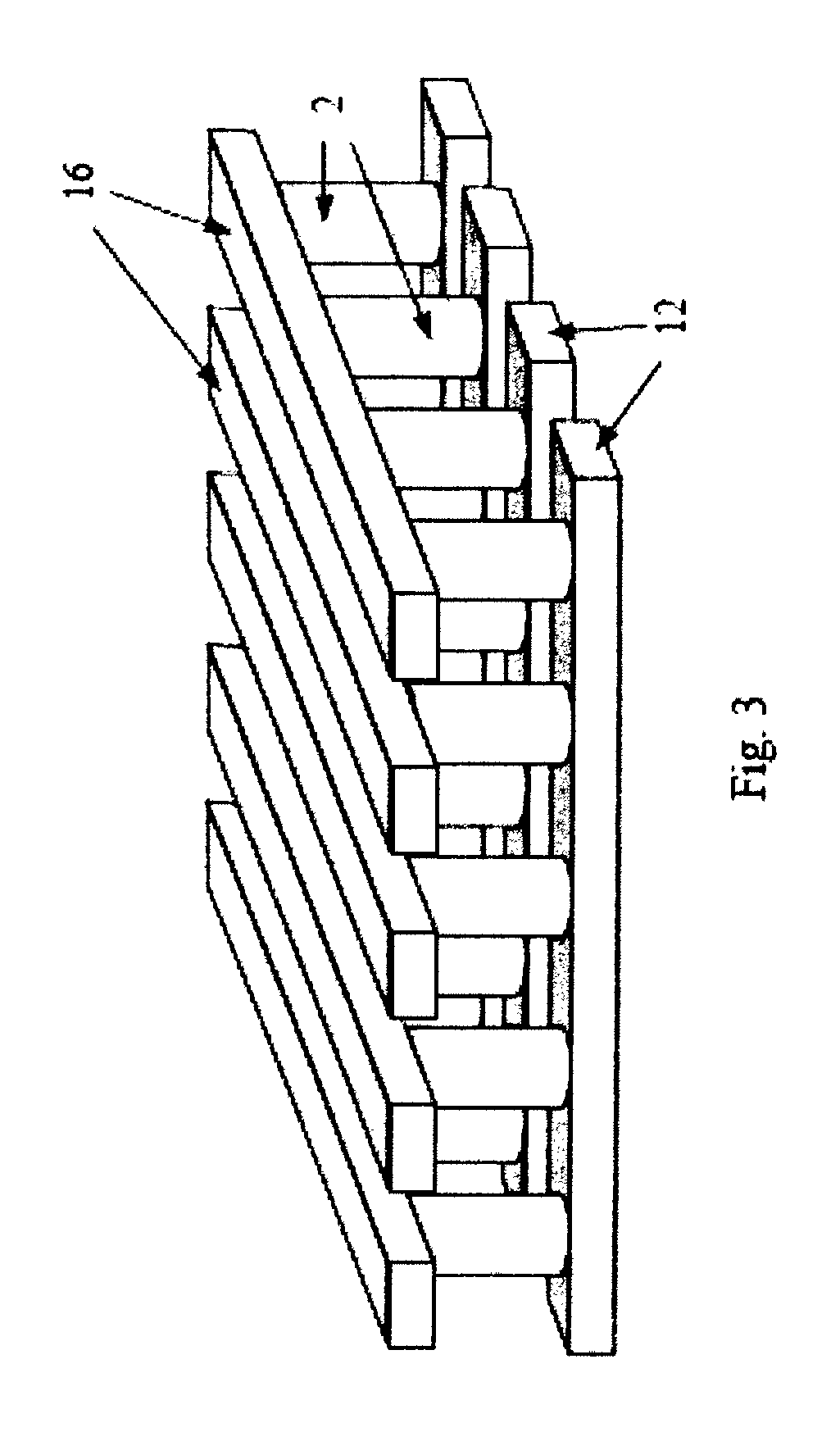Method of making a diode read/write memory cell in a programmed state
a memory cell and diode technology, applied in the field of nonvolatile memory arrays, can solve the problems of difficult fabrication and operation of three-terminal devices, difficult work of chalcogenides, complex solutions for achieving erasable or multi-state cells, etc., and achieve the effect of low resistivity
- Summary
- Abstract
- Description
- Claims
- Application Information
AI Technical Summary
Benefits of technology
Problems solved by technology
Method used
Image
Examples
Embodiment Construction
[0008] One embodiment of the invention provides a method of making a nonvolatile memory device comprising at least one memory cell which consists essentially of a diode and electrically conductive electrodes contacting the diode, the method comprising fabricating the diode in a low resistivity, programmed state without an electrical programming step.
[0009] Another embodiment of the invention provides a method of making a diode, comprising forming a first electrode, forming a semiconductor region in electrical contact with the first electrode, wherein the semiconductor region comprises a p-n or a p-i-n junction in at least one silicon, germanium or silicon-germanium layer, forming a titanium layer on the semiconductor region, forming a titanium nitride layer on the titanium layer, reacting the titanium layer with the semiconductor region to form a titanium silicide, titanium germanide, or titanium silicide-germanide layer on the semiconductor region, removing the titanium nitride la...
PUM
 Login to View More
Login to View More Abstract
Description
Claims
Application Information
 Login to View More
Login to View More - R&D
- Intellectual Property
- Life Sciences
- Materials
- Tech Scout
- Unparalleled Data Quality
- Higher Quality Content
- 60% Fewer Hallucinations
Browse by: Latest US Patents, China's latest patents, Technical Efficacy Thesaurus, Application Domain, Technology Topic, Popular Technical Reports.
© 2025 PatSnap. All rights reserved.Legal|Privacy policy|Modern Slavery Act Transparency Statement|Sitemap|About US| Contact US: help@patsnap.com



